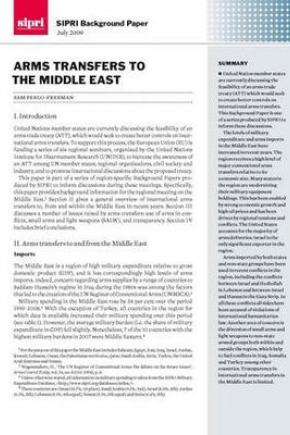Arms Transfers to the Middle East
The levels of military expenditure and arms imports in the Middle East have increased in recent years. The region receives a high level of major conventional arms transfers relative to its economic size. Many states in the region are modernizing their military equipment holdings. This has been enabled by strong economic growth and high oil prices and has been driven by regional tensions and conflicts. The United States accounts for the majority of arms deliveries; Israel is the only significant exporter in the region.
Arms imported by both states and non-state groups have been used in recent conflicts in the region, including the conflicts between Israel and Hezbollah in Lebanon and between Israel and Hamas in the Gaza Strip. In all these conflicts all sides have been accused of violations of international humanitarian law. Another area of concern is the diversion of small arms and light weapons to non-state armed groups both within and outside the region, which help to fuel conflicts in Iraq, Somalia and Turkey among other countries. Transparency in international arms transfers in the Middle East is limited.
I. Introduction
II. Arms transfers to and from states in the Middle East
III. Issues regarding arms transfers to and from the Middle East
IV. Conclusions

